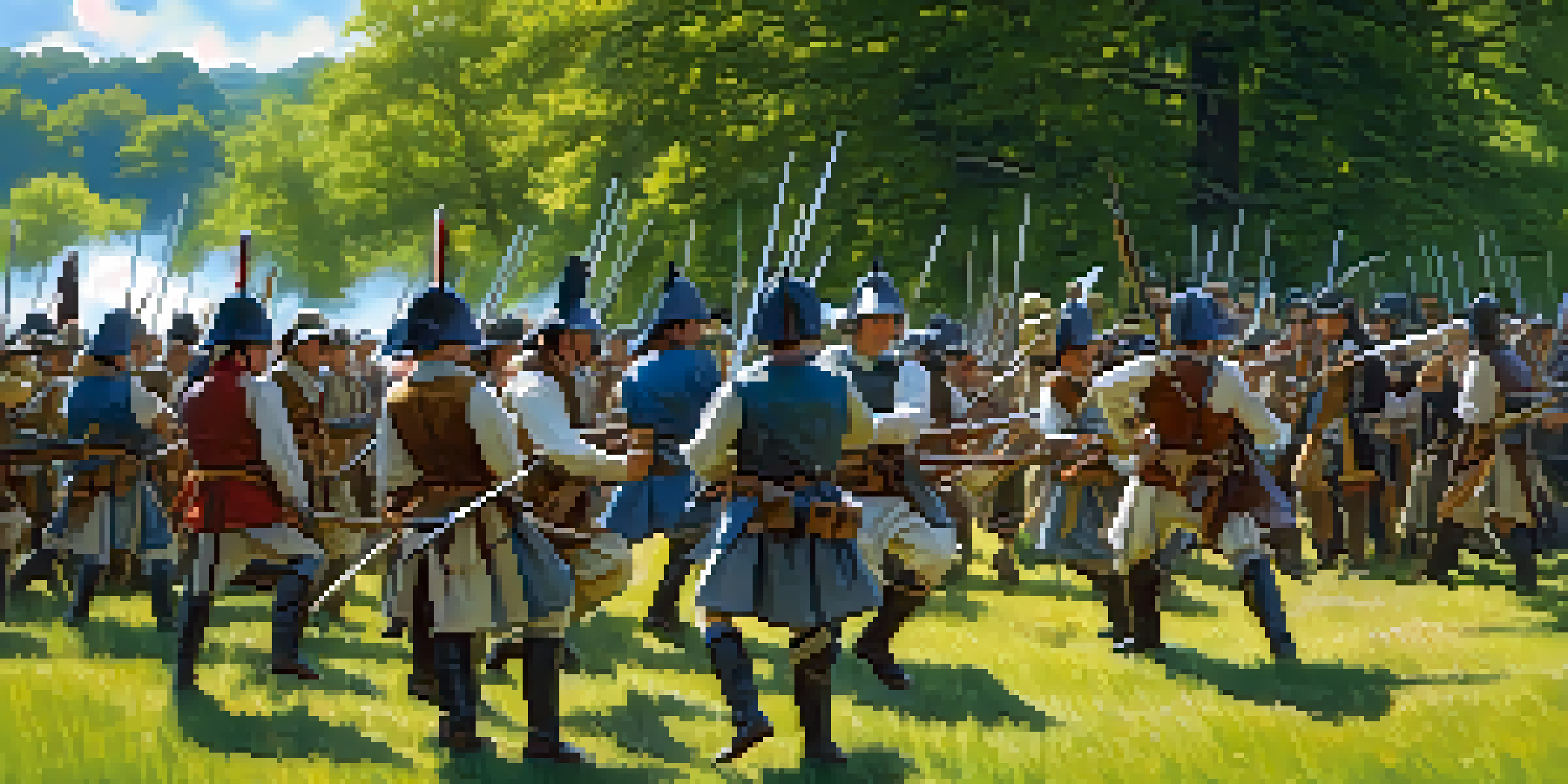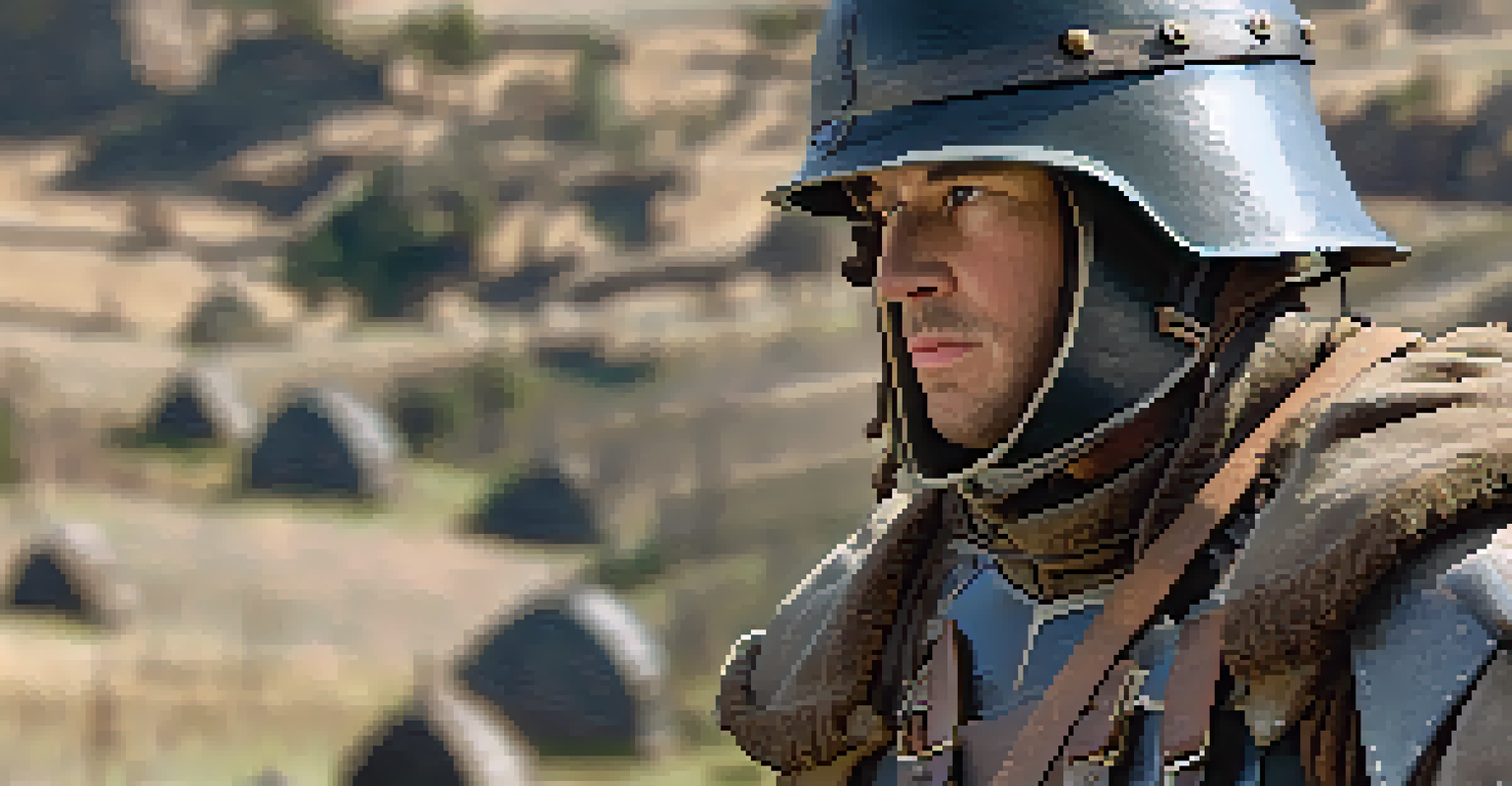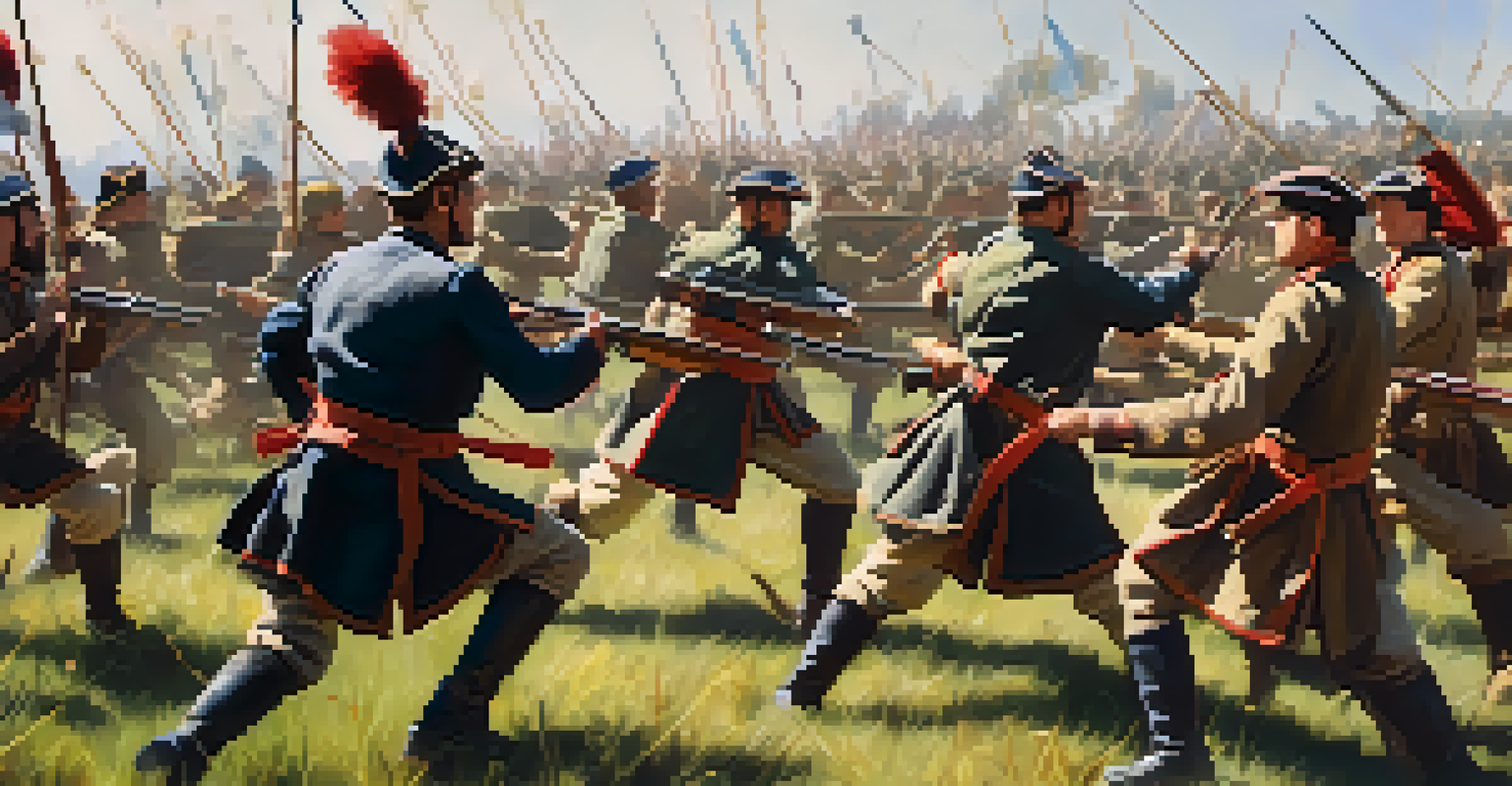Participating in Battle Reenactments: Safety First

Understanding the Risks of Battle Reenactments
Participating in battle reenactments can be thrilling, but it's essential to recognize the inherent risks involved. From physical injuries to potential accidents, knowing these risks helps you prepare effectively. Just like any sport or outdoor activity, understanding the dangers is the first step toward safety.
Safety isn't just a slogan, it's a way of life.
For instance, participants may encounter sharp objects, uneven terrain, or even weather-related challenges. Each reenactment site has its unique set of hazards, which can vary widely. By being aware of these potential issues, you can take proactive steps to mitigate them.
Moreover, understanding the risks encourages a culture of safety within the reenactment community. When everyone is informed, participants are more likely to look out for each other, creating a supportive environment that prioritizes health and safety.
Essential Gear for Safe Participation
Choosing the right gear is crucial for staying safe during reenactments. While the focus is often on authenticity, safety equipment should never be overlooked. This includes items like helmets, protective padding, and sturdy footwear that can withstand the rigors of battle.

For example, a well-fitted helmet can prevent head injuries in the event of a fall or collision. Additionally, padded clothing can shield you from minor scrapes and bruises, helping to ensure an enjoyable experience. Remember, authenticity is important, but your safety should always come first.
Recognizing Risks is Crucial
Understanding the inherent risks in battle reenactments helps participants prepare effectively and prioritize safety.
Don't forget to check your gear regularly for wear and tear. Just like a soldier would maintain their equipment, you should ensure that your protective gear is in top condition before each event. This simple practice can save you from potential injuries.
Training and Practice: The Key to Safety
Before stepping onto the battlefield, it's essential to undergo proper training. Familiarizing yourself with the historical techniques and tactics can significantly reduce the risk of accidents. As they say, practice makes perfect, and that holds true in reenactments too.
The best way to predict the future is to create it.
Consider attending workshops or training sessions offered by experienced reenactors. These sessions not only teach you the ropes but also help you develop camaraderie with fellow participants. A well-prepared group can act more cohesively, which enhances everyone's safety.
Additionally, rehearsing battle formations and movements can minimize confusion during the actual event. This preparation allows participants to anticipate each other's actions, reducing the risk of unexpected collisions or falls. It’s all about creating a synchronized team effort.
Importance of Communication Among Participants
Effective communication is vital during battle reenactments. Clear signals and commands can help maintain order on the field, ensuring everyone knows what to expect. This is especially important in the heat of battle, where chaos can easily arise.
For instance, using hand signals or designated calls can help convey important information quickly. When everyone is on the same page, the chances of accidents decrease significantly. It’s like being part of a well-rehearsed play where everyone knows their lines.
Safety Gear is Non-Negotiable
Choosing appropriate safety gear, like helmets and protective padding, is essential to prevent injuries during reenactments.
Moreover, establishing a buddy system can further enhance safety. By pairing up with a fellow participant, you can look out for one another during the event. This sense of accountability fosters a supportive environment where everyone feels more secure.
Adhering to Event Guidelines and Regulations
Every battle reenactment event comes with its own set of guidelines and regulations. These rules are designed to ensure the safety of all participants, and adhering to them is not just advisable—it's essential. Whether it’s a specific dress code or rules about weapon usage, following these guidelines helps maintain order.
For example, certain events may prohibit the use of live weapons or require specific safety gear. Ignoring these regulations can lead to dangerous situations, not just for yourself but for your fellow reenactors as well. Always review the event’s rules beforehand to ensure a safe experience.
Moreover, these guidelines often stem from past experiences and lessons learned. By respecting them, you contribute to a culture of safety that benefits everyone involved. It's all about creating a safer environment for all participants, so take them seriously.
First Aid Preparedness: Be Ready for Anything
Even with the best precautions, accidents can happen, which is why first aid preparedness is vital. Having a first aid kit on hand can make a significant difference in case of minor injuries. It’s like having a safety net ready to catch you if you stumble.
Consider taking a first aid course to equip yourself with essential skills. Knowing how to treat common injuries, such as cuts or sprains, can empower you to respond effectively in emergencies. This knowledge not only helps you but can also assist fellow participants in need.
Training Fosters Team Safety
Proper training and practice not only enhance individual skills but also create a cohesive group that acts safely together.
Additionally, designating a first aid officer within your group can streamline communication during an emergency. This person can take charge, ensuring that help is provided swiftly and efficiently. Remember, being prepared is the best way to stay safe!
Post-Event Reflection: Learning from Experience
After each reenactment, it's beneficial to hold a debriefing session with your fellow participants. Reflecting on the event allows you to discuss what went well and what could be improved. This practice promotes continuous learning and enhances safety for future events.
For example, discussing any near misses or accidents can help everyone understand how to avoid similar situations in the future. It’s a valuable opportunity to share insights and strategies that could benefit the entire group. Remember, every experience is a chance to grow.

Moreover, sharing feedback fosters a strong community spirit among reenactors. When participants feel comfortable discussing challenges and successes, it creates an environment where everyone is committed to safety. This collaborative approach ensures that each reenactment is better than the last.